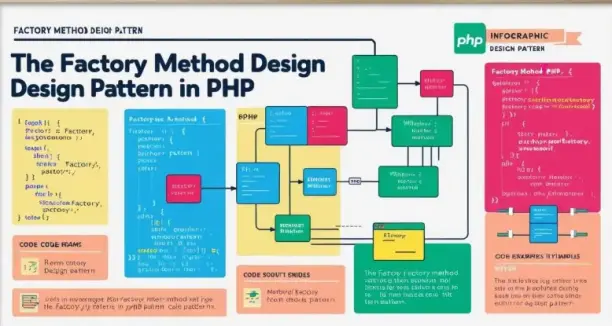Understanding the Factory Method Design Pattern with PHP Examples

🧠 Introduction
When building scalable and maintainable software, design patterns are essential tools in a developer’s toolkit. One of the most widely used creational patterns is the Factory Method.
This design pattern helps us deal with object creation problems while keeping code loosely coupled and easily extendable. In this guide, we'll explore the Factory Method pattern, its benefits, and how to implement it using PHP.
🏗️ What is the Factory Method Pattern?
The Factory Method is a creational design pattern that defines an interface for creating an object, but lets subclasses alter the type of objects that will be created.
In simpler terms, the Factory Method allows the instantiation of objects without specifying their exact class, which is useful when you need to work with multiple related classes.
🎯 Use Cases
You should consider using the Factory Method when:
-
The exact type of object to create isn’t known ahead of time.
-
The logic for instantiation needs to be delegated to a subclass.
-
You want to adhere to SOLID principles, especially the Open/Closed Principle.
🧪 Factory Method in Action (PHP Example)
Let’s imagine you’re building a notification system that sends either email or SMS messages depending on user preferences.
🔧 Step 1: Define a Common Interface
🔧 Step 2: Create Concrete Implementations
🔧 Step 3: Build the Factory
🔧 Step 4: Create Concrete Factories
🔧 Step 5: Client Code
✅ Output:
🧠 Benefits of Using the Factory Method
-
✅ Loose Coupling: The client code does not need to know the exact class name.
-
✅ Better Scalability: Add new notification types without changing client code.
-
✅ Cleaner Code: Centralizes object creation logic.
-
✅ Adheres to SOLID principles: Especially Open/Closed and Single Responsibility.
🔗 Helpful Resources
🏁 Conclusion
The Factory Method Pattern is a powerful and flexible way to create objects in PHP while adhering to best OOP principles. By separating the creation logic from the business logic, you gain a more extensible, testable, and readable codebase.
Whether you're building a small app or a large-scale system, this pattern can simplify how your objects are managed and extended.
Want to master more design patterns with real PHP examples? Keep exploring our Design Patterns category for detailed guides!

Leave a comment